The Amazon marketplace has seen an unprecedented surge in the past few years, becoming the go-to platform for millions of buyers worldwide. Whether you’re a budding entrepreneur or an already settled business owner, Amazon offers a vast, ever-expanding audience eager to purchase your products. According to the analysis, 28% of Amazon customers complete their purchases in 3 minutes or less, and 50% of them in less than 15 minutes.
This is what makes selling on Amazon so appealing. To build on this trend, Fulfillment by Amazon (FBA), is a game-changing program that allows sellers to leverage Amazon’s vast network of fulfillment centers. With FBA, you dispatch your products to Amazon, and they handle the rest – storage, packing, shipping, and even customer service. Imagine the convenience of having Amazon’s efficient system working for you, ensuring your customers receive their orders quickly and efficiently.
The benefits of using FBA are immense but let us first understand the meaning of FBA. And then, we’ll walk you through the process of starting with Amazon FBA in 2024. From setting up your account to optimizing your listings, we’ll cover everything you need to know to start selling successfully on Amazon. Let’s get started!
What is Amazon FBA?
Fulfillment by Amazon (FBA) is a service offered by Amazon that enables sellers to keep their products in Amazon fulfillment centers. When someone places an order, Amazon handles all the formalities of delivering the order, such as pick-up, packing, 24*7 customer services, etc. This program offers a streamlined way for sellers to manage their inventory and reach a larger customer base through Amazon’s extensive distribution network. There is a pool of benefits as a seller at FBA, including:
- Access to Amazon Prime Customers: Prime customers are more likely to purchase products with fast and free shipping, which is automatically included with FBA. This can result in higher sales and greater exposure for your products.
- Efficient Storage and Inventory Management: Amazon’s fulfillment centers store your products, ensuring they are kept in optimal conditions. This allows you to scale your business without the hassle of maintaining your storage facilities.
- Enhanced Customer Service: Amazon handles customer service and returns for FBA products. This not only saves you time but also ensures a high level of customer satisfaction, as Amazon’s customer service is top-notch and renowned for its efficiency and reliability.
- Increased Sales Potential: Products fulfilled by Amazon are eligible for various promotional opportunities, such as Amazon Prime Day, National festival sales, Black Friday, and Cyber Monday deals. These events attract shoppers looking for great deals, significantly boosting sales.
- Simplified International Expansion: FBA also makes it easier to expand your business internationally. Sellers handle shipping and customs but gain access to a vast international customer base through Amazon.
Overview of Market Size
Amazon places its customers at the leading edge of everything it does. The company offers an exceptional shopping experience, resulting in a delighted customer base. Our guide on starting an Amazon business includes statistics highlighting the platform’s market size and growth potential.
- In 2023, US-based sellers sold more than 4.5 billion items on Amazon.
- Amazon’s total sales in the United States are projected to reach $492.23 billion in 2024
- As per the report by Statista, in 2023, the net income amounted to 30.4 billion U.S. dollars.
- In the first quarter of 2024, Amazon’s total net sales topped $143 billion, exceeding the $127 billion reported in the first quarter of 2023.
Choosing the Perfect Amazon Business Model
Are you ready to dive into the dynamic world of Amazon selling? The first step is choosing the right business model. With several paths available, finding one that aligns with your goals, resources, and interests is essential. Let’s explore the different selling models on Amazon:
Private Label: Building Your Brand
Private Labeling includes building your own branded products from scratch. This model allows you to take control of product quality, branding, and marketing. You source products from manufacturers, add your branding, and sell them on Amazon.
Pros:
- Complete control over branding and pricing.
- Potential for higher profit margins.
- Ability to create a loyal customer base.
Cons:
- Requires significant upfront investment.
- Time-consuming product development and testing.
Wholesale: Selling Established Brands
Wholesale involves purchasing products in bulk from established brands and reselling them on Amazon. This model leverages the brand recognition and trust already established by these brands.
Pros:
- Lower risk compared to private labeling.
- Faster time to market.
- Easier to manage inventory and fulfillment.
Cons:
- Lower profit margins.
- Competition with other sellers offering the same products.
Reselling/Arbitrage: Finding Profitable Deals
Reselling/arbitrage is the practice of purchasing things at a reduced price from retail stores or online marketplaces and reselling them at a higher price on Amazon.
Pros:
- Low upfront investment.
- Quick turnaround on inventory.
- Flexibility to sell a variety of products.
Cons:
- Time-intensive sourcing process.
- Limited scalability.
Dropshipping: Minimal Inventory Management
Dropshipping allows you to sell things without keeping inventory. When a customer places an order, you buy it from a third-party provider, who ships it directly to them.
Pros:
- Low startup costs.
- Minimal inventory management.
- Wide range of products to sell.
Cons:
- Lower profit margins.
- Less control over product quality and shipping times.
Handmade: Showcasing Your Craftsmanship
Handmade models on Amazon are ideal for artisans and craftsmen who create unique, handmade products. This model allows you to reach a global audience with your creations.
Pros:
- Direct connection with customers.
- Higher profit margins for unique products.
- Opportunity to showcase your creativity.
Cons:
- Limited scalability.
- Time-consuming production process.
Choosing the Right Model
When deciding which Amazon business model to pursue, consider the following factors:
1. Investment: How much capital can you invest upfront?
2. Time: How much time can you dedicate to product development and management?
3. Expertise: Do you have experience in sourcing, branding, or crafting?
4. Risk Tolerance: Are you comfortable with higher risks for potentially higher rewards?
Selecting the right Amazon business model is critical to your eCommerce success. Evaluate your strengths and resources, and choose a model that perfectly aligns with your vision and goals. You can turn your Amazon venture into a thriving business with the right approach.
Strategy to Choose the Right Products to Sell on Amazon
Launching a successful Amazon business starts with selecting the right products. This decision can make or break your venture. To help you navigate this crucial step, we’ll discuss essential factors like Competitive Analysis, Keyword Research, ROI, and more.
1. Competitive Analysis: Understanding the Market
Before making product selections, conduct a thorough competitive analysis. It involves studying your potential competitors to understand their strengths and weaknesses.
Key Steps:
- Identify Competitors: Use Amazon’s search function to find products similar to what you’re considering.
- Analyze Reviews: Look at customer feedback to identify common complaints and areas for improvement.
- Study Pricing: Compare prices to ensure your product competes or offers better value.
- Examine Listings: Analyze top-selling listings to understand their strategies for images, descriptions, and keywords.
2. ROI: Ensuring Profitability
Return on Investment (ROI) is an important factor in product selection. It determines whether your efforts and investments will yield profitable returns.
Key Steps:
- Calculate Costs: Factor in manufacturing, shipping, Amazon fees, advertising, and other expenses.
- Estimate Selling Price: Determine a competitive yet profitable price point.
- Assess Profit Margins: Aim for a minimum profit margin of 30% to ensure profitability after all expenses.
3. Market Demand: Choosing In-Demand Products
Selecting products with high market demand reduces the risk of slow sales and unsold inventory.
Key Steps:
- Trend Analysis: Use tools like Google Trends to identify growing product categories.
- Seasonal Demand: Consider products with year-round demand rather than seasonal spikes.
- Sales Data: Analyze sales data from Amazon to identify consistently high-selling products.
4. Product Quality and Differentiation: Standing Out from the Crowd
High-quality products and unique selling points (USPs) set you apart from competitors and build customer loyalty.
Key Steps:
- Source Quality Materials: Ensure your products are made from high-quality materials.
- Innovate: Offer unique features or improvements based on customer feedback and competitive analysis.
- Branding: Invest in professional branding, including packaging and marketing materials.
5. Legal and Regulatory Considerations: Avoiding Compliance Issues
Ensuring your products comply with Amazon’s policies and legal regulations is necessary to avoid potential issues.
Key Steps:
- Research Regulations: Understand the regulations and standards for your product category.
- Compliance: Ensure your products meet safety standards and legal requirements.
- Amazon Policies: Familiarize yourself with Amazon’s rules and guidelines for sellers.
Start with thorough research and make informed decisions. This foundation will set you up for success in the competitive world of Amazon selling.
Sourcing Your Amazon Products
1. Researching Amazon Suppliers
- Search for Products: Use Alibaba’s search function to find products matching your criteria.
- Filter by Supplier: Focus on verified and gold suppliers with high ratings.
- Check Reviews: Look at previous buyer reviews and ratings for reliability.
- Database Search: Utilize Jungle Scout’s Supplier Database to find reliable suppliers based on historical data.
- Analyze Metrics: Review supplier metrics such as on-time delivery rates and transaction volumes.
2. Contacting Suppliers for Quotes
- Craft a Professional Message: Introduce yourself, describe your business, and specify product details.
- Request Information: Ask for minimum order quantities (MOQs), pricing, and payment terms.
- Follow-up: If you don’t receive a response, follow up to show your interest and reliability.
3. Evaluating and Modifying Product Samples
- Order Samples: Request samples from multiple suppliers to compare quality.
- Test Products: Evaluate the samples for durability, functionality, and adherence to specifications.
- Provide Feedback: Communicate any required modifications to the supplier and request revised samples if necessary.
4. Ordering and Shipping Your Products
- Negotiate Terms: Finalize pricing, MOQs, and payment terms with your chosen supplier.
- Place Order: Confirm your order and arrange for production to begin.
5. Arranging Shipping to Amazon Warehouses:
- Choose a Shipping Method: Decide between air and sea, based on cost and urgency.
- Labeling and Packaging: Ensure products are labeled and packaged according to Amazon’s FBA requirements.
- Coordinate with Freight Forwarders: Use a freight forwarder to handle customs and delivery to Amazon’s fulfillment centers.
With warehouses in the USA, Intoglo offers international shipment by sea. Opt for services that specialize in deliveries to Amazon warehouses. Intoglo leverages its extensive network and expertise to ensure timely and efficient shipment of goods.. Intoglo’s Warehouses located within the USA ensure compliance with all Amazon’s FBA requirements.
Creating a Successful Amazon Listing: Key Steps
1. Keyword Research: Driving Traffic to Your Listings
Keyword research is essential for ensuring your products appear in relevant searches on Amazon. Effective keyword strategy drives organic traffic to your listings.
- Use Tools: Utilize tools like Google Keyword Planner and Amazon’s own Keyword Planner.
- Identify High-Volume Keywords: Find keywords with high search volume and low to moderate competition.
- Incorporate Keywords: Integrate these keywords naturally into your product titles, descriptions, and bullet points.
2. Purchasing the UPC Barcode/ HS Code
- UPC Barcode: Used primarily for retail purposes to uniquely identify products sold in stores and online. Essential for listing products on platforms like Amazon.
- HS Code: Stands for Harmonized System Code, used for classifying goods in international trade. Determines customs duties and import/export regulations.
Steps for getting UPC Barcode:
- Obtain a UPC: Purchase a unique Universal Product Code (UPC) from a certified barcode provider.
- Enter UPC in Seller Central: During the listing creation process, you must input your product’s UPC to ensure it is uniquely identified in the Amazon catalog.
- Compliance Check: Ensure the UPC complies with Amazon’s requirements to avoid listing issues.
Obtain AI-Powered HS Code Scanner:
- Efficiency: Use Intoglo’s advanced AI-powered HS code scanner to quickly and accurately classify your products.
- Accuracy: Reduce errors and streamline the process of finding the correct HS code, ensuring smooth international shipping and customs clearance.
3. Creating Your Product Listing in Seller Central
- Log into Seller Central: Access your Seller Central account and navigate to the “Inventory” tab.
- Add a Product: Click “Add a Product” and choose an existing product to match or create a new listing.
- Enter Product Information: Fill in required fields such as product title, brand, category, and UPC.
- Product Details: Provide detailed product descriptions, bullet points, and key features.
- Save and Publish: Review all information and save your listing. Once reviewed, publish it to go live on Amazon.
4. Writing and Optimizing Your Amazon Listing
- Title Optimization: Create a compelling title incorporating primary keywords while highlighting key features and benefits.
- Bullet Points: Write concise, benefit-focused bullet points to convey the product’s main features quickly.
- Product Description: Develop a detailed description that tells the product story, includes relevant keywords, and addresses potential customer questions.
- Backend Keywords: Use Seller Central’s backend keyword section to include additional relevant search terms not in the public listing.
5. Securing Quality Images and Video For Your Listing
- High-Resolution Images: Use high-quality images showing the product from multiple angles. Ensure images meet Amazon’s guidelines (1000×1000 pixels minimum).
- Lifestyle Images: Include lifestyle photos demonstrating the product in use to help customers visualize its functionality.
- Infographics: Use infographics to highlight key features and benefits on the images directly.
- Product Video: If possible, add a product video to showcase the item in action, provide detailed information, and enhance customer understanding.
Following these steps, you can build an excellent, optimized Amazon listing that attracts potential buyers and drives sales.
Growing Your Product on Amazon: Key Strategies
1. Improving Amazon Conversion Rates
Competitive Pricing:
- Market Analysis: Regularly analyze competitor prices to ensure your product is competitively priced.
- Dynamic Pricing Tools: Use tools like RepricerExpress to adjust prices automatically based on market conditions.
- Promotions and Discounts: Offer time-limited discounts and coupons to attract buyers.
Acquiring Customer Reviews
- Follow-Up Emails: Use Amazon’s Buyer-Seller Messaging to send polite follow-up emails requesting reviews.
- Amazon Vine Program: Enroll in the Amazon Vine program to get reviews from trusted reviewers.
- Request a Review Button: Use Amazon’s “Request a Review” button in Seller Central to send automated review requests.
- Product Inserts: Include inserts in your packaging asking customers to leave a review, ensuring compliance with Amazon’s guidelines.
2. Making Your First Sales
- Campaign Setup: To gather initial data, start with an automatic campaign via Amazon PPC advertising, then refine with manual campaigns targeting high-performing keywords.
- Budget Management: Set a daily budget for sufficient ad exposure without overspending.
- Bid Optimization: Monitor and adjust bids based on performance metrics to maximize ROI.
- A/B Testing: Test various ad creatives and keyword strategies to identify the most effective approach.
By focusing on competitive pricing, optimized listings, acquiring customer reviews, and leveraging Amazon PPC advertising, you can effectively launch and grow your product on Amazon, ensuring long-term success.
Why Choose Intoglo for Amazon FBA Shipment?
Intoglo stands out as the ideal choice, offering a range of benefits that ensure your inventory is managed efficiently and effectively. Here’s why Intoglo should be your go-to for Amazon FBA shipment:
- Intoglo is a 5-star rated Amazon FBA shipping service provider, highly trusted by Amazon sellers, offering comprehensive end-to-end rates from your warehouse to Amazon warehouses in the USA.
- One significant advantage of partnering with Intoglo is our cost-effective shipping rates. Our competing prices help you save on shipping expenses without compromising on service quality.
- Intoglo boasts compliance expertise, ensuring your shipments meet all necessary standards and regulations. Our team stays up-to-date with Amazon’s policies, so you don’t have to worry about compliance issues disrupting your business.
- Intoglo ensures timely deliveries by following Amazon guidelines, taking timely appointments at Amazon warehouses, and using certified truckers in the USA.
- Intoglo’s AI-powered tracking system benefits from real-time tracking of your shipments. Our advanced tracking system lets you track the status and location of your inventory at any time.
- Intoglo has partnered with over 150 Amazon sellers and successfully delivered more than 1,000 shipments to Amazon warehouses in the USA.
- Intoglo assists first-time shippers with FCL shipments to Amazon warehouses and offers an AI-powered HS code scanner, allowing users to upload product images to estimate duty percentages in the USA.
These benefits ensure that your e-commerce business runs smoothly, allowing you to focus on building your brand and satisfying your customers.
Make the smart choice for your Amazon FBA needs. Choose Intoglo and experience the difference in service and reliability.


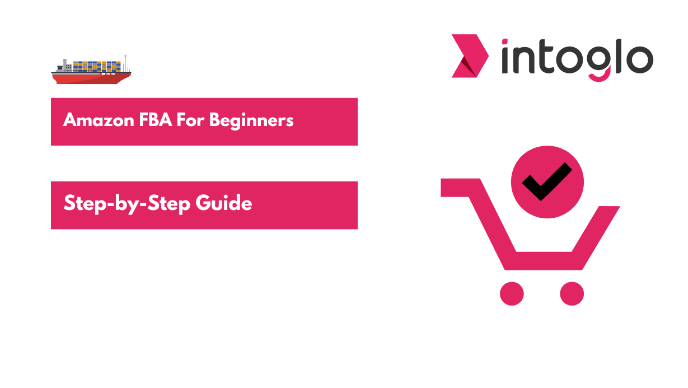
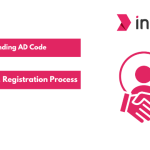
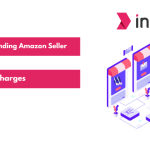
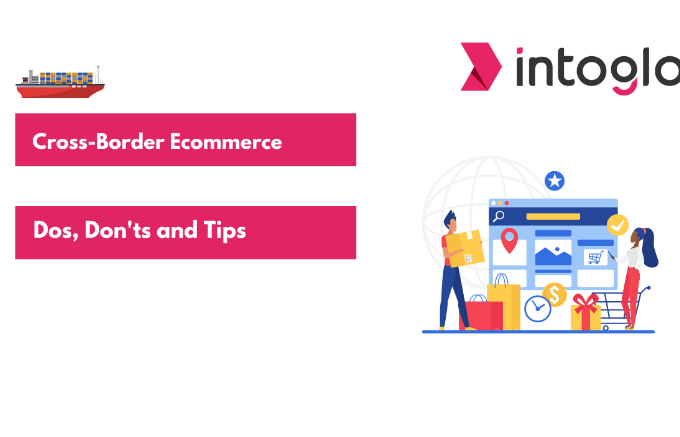
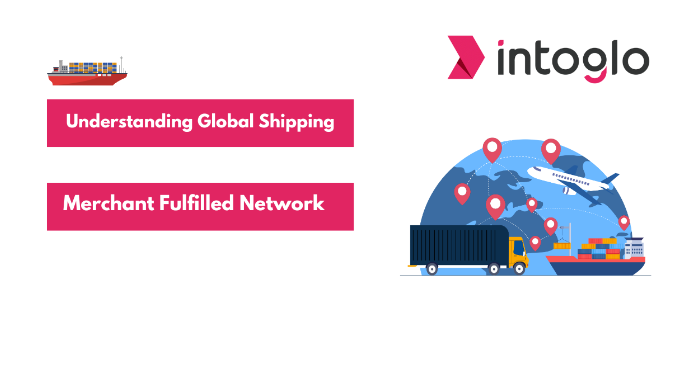
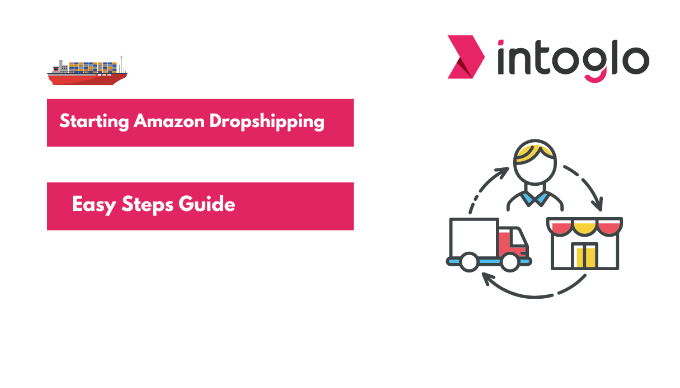
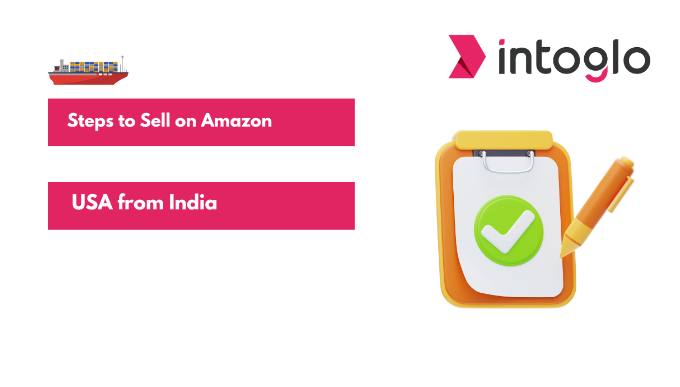
Leave a comment